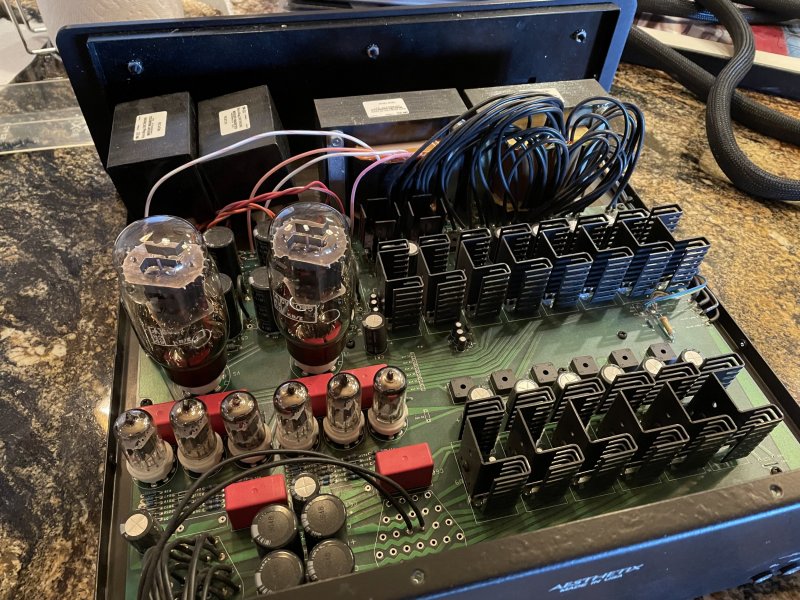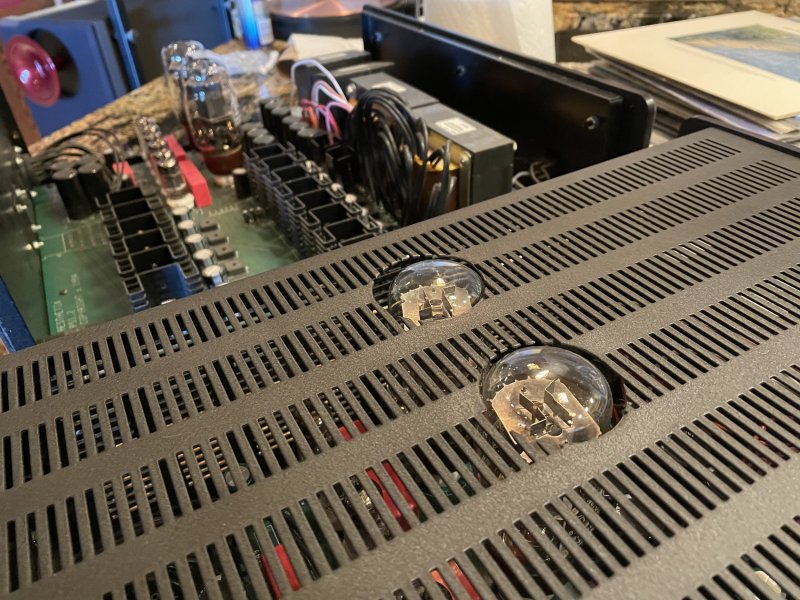@Tirebiter ,
Glad your getting into the groove with your Io, both, literally and figuratively. I totally get the film versus digital transition period…might be still going on

. I worked for a governament agency in the 90s and we were the first to obtain digital cameras from Kodak. These were pro cameras and Kodak sent a team to our agency as part of the fielding. We had all of the analog tools, accessories, and chemicals for wet film and were embracing the digital revolution, the horror of it all. We were already 22 megapixels back then with these specially built cameras.
I read an article from Robert Harley, The Absolute Sound, from the Feb/2022 edition and he mentions how we as humans are used to analog feeling based on our interaction with mechanical devices, of switches, dials, knobs, cartridges, car shifting, etc., and how the digital evolution is changing our experiences from being tactile humans to less tactile when using digital and streaming devices. He cites a few books which I think are worth a read because I feel that as he Stated, we gain some things, but we lose some things, and at what cost? Makes me realize and understand why I love my manually operated sports car, even if it hurts my knees and back When shifting too much, LOL.
“The advent of digital audio has without question been a boon for music lovers, but its rise has also rendered audio less of a hands-on hobby than it once was. Selecting music from an app is a very different experience than getting an LP out of jacket, put- ting it on the turntable, starting the platter rotating, and dropping the stylus in the groove. Don’t get me wrong; I love the conve- nience of sitting in my listening seat with a Roon-enabled tablet, but as with so many technological advances, there’s a price to be paid for that convenience. The new technology’s virtues are so compelling that we forget what’s been lost.
As Jonathan notes, the connection between man and machine extends to a wide range of products, passions, and hobbies be- yond audio. In his book The Revenge of Analog: Real Things and Why They Matter, author David Sax documents and explores the re- surgence of film cameras, board games, printed books, and vinyl records, particularly among young people who have not previ- ously known the analog equivalents of digital cameras, computer games, ebooks, and music streaming. For some reason, the older generation who made the transition from the analog version of a thing to the digital are more accepting of the digital. Other books trumpet the same message—Analog Church: Why We Need Real People, Places, and Things in the Digital World and The New Analog: Listening and Connecting in a Digital World, to name two.
But the allure and romance of hands-on connection with mechanical objects is most powerfully expressed in Matthew B. Crawford’s Why We Drive: Toward a Philosophy of the Open Road. Crawford asserts that modern automobiles are designed to isolate the driver not just from the outside environment, but also from the automobile itself. The increasing inclusion of features such as lane-departure warning, automatic braking, and adaptive cruise control progressively diminish the driver’s role in operating the vehicle. Navigation systems obviate our need to orient ourselves in space and plot a course of our own making; instead, we mind- lessly follow instructions from a computer. The driver becomes disengaged from the machine and the act of driving, and con- sequently is robbed of the powerful human need for a sense of agency. A large portion of Why We Drive is a jeremiad against fully autonomous vehicles, the ultimate realization of the automobile
industry’s (and Big Tech’s) push to isolate humans from the act of attentive driving.
But some of us want to feel the connection to the road, sensing through the steering wheel the chassis and tire behavior. We become acutely attuned to the engine’s sound and respond through precise- ly timed shifts of a manual transmission, left foot and right hand moving in per- fectly coordinated synchrony with the machine. It’s a thing of beauty. The car becomes an extension of the driver, heightening the senses rather than dulling them. Piloting a driver-focused car creates a feeling of self-direction, in which the machine is at your service rather than the other way around.
Setting up a turntable and tonearm, adjusting VTA, cleaning and playing an LP, swapping tubes and biasing them, threading tape through the exquisitely machined parts of a tape deck’s transport— these are the audio equiva- lents of piloting a driver-fo- cused automobile. They put you in intimate physical con- tact with the machines that bring you music. They foster a mindful awareness of those machines, as well as a great- er appreciation for them and how they work.”
Harley, H. (2022, Feb). The price of progress. The Absolute Sound. Issue 324, page 12.










